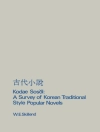Elizabeth Bishop and the Music of Literature brings together the latest understandings of how central music was to Bishop’s writing. This collection considers Bishop’s reworking of metrical and rhythmic forms of poetry; the increasing presence of prosaic utterances into speech-soundscapes; how musical poetry intones new modes of thinking through aural vision; how Bishop transforms traditionally distasteful tones of violence, banality, and commerce into innovative poetry; how her diverse, lifelong musical education (North American, European, Brazilian) affects her work; and also how her diverse musical settings have inspired global contemporary composers. The essays flesh out the missing elements of music, sound, and voice in previous research that are crucial to understanding how Bishop’s writing continues to dazzle readers and inspire artists in surprising ways.
İçerik tablosu
1. Introduction.
.- 2. ‘I am in Need of Music’: Elizabeth Bishop and the Energies of Sound and Song.- 3. Music of the Sea: Elizabeth Bishop and Symbolist Poetics.- 4. The Rhythm of Syntax in Elizabeth Bishop’s ‘At the Fishhouses”.- 5. ‘Hearing Things’: Voice and Rhyme in the Poems of Elizabeth Bishop.- 6. Causes for Excess: Elizabeth Bishop’s Eighty-Eight Exclamations.- 7. ‘A Very Important Violence of Tone’: Bishop’s ‘Roosters’ and Other Poems.- 8. ‘Spontaneity occurs in a good
attack’: Voice Control in Late Bishop.- 9. Elizabeth Bishop and Brazilian Popular Music: From Anonymous Sambas to Contemporary Composers.- 10. ‘In Need of Music’: Musical Settings of Elizabeth Bishop.
Yazar hakkında
Angus Cleghorn is Professor of English and Liberal Studies at Seneca College, Canada. He has co-edited The Cambridge Companion to Elizabeth Bishop (2014), Elizabeth Bishop in the 21st-Century: Reading the New Editions (2012), authored Wallace Stevens’ Poetics: The Neglected Rhetoric (2000), and published numerous essays on Stevens and Bishop.












